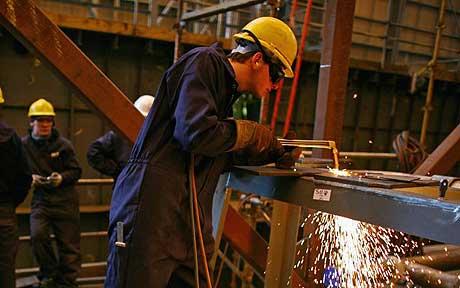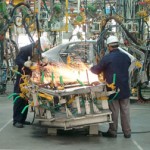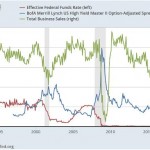U.K. Industrial Output Surges More Than Forecast

U.K. industrial production rose more than economists forecast in February bolstered by a surge in factory output that points to a continuing economic recovery.
Production increased 0.9 percent from January, when it was unchanged, the Office for National Statistics said today in London. The median of 26 estimates in a Bloomberg News survey was for 0.3 percent growth. Manufacturing output surged 1 percent, compared with a forecast of 0.3 percent. The pound strengthened after the report.
The data adds to evidence that the U.K. economy continued to expand in the first quarter. The British Chambers of Commerce said in a report today that its measures of export sales at manufacturers and services companies increased in the three months through March, as did employment intentions.
“February’s strong increase in overall production sets the industry up to make a robust contribution” to first-quarter growth, Samuel Tombs, an economist at Capital Economics Ltd. in London, said in a research note. “The latest industrial production figures provide reassurance that the economic recovery has remained strong and broad-based.”
The jump in production in February was the biggest in eight months, and manufacturing (UKMPIMOM) contributed 0.7 percentage point to that growth. Within manufacturing, growth was led by basic pharmaceutical products, transport equipment and food. Seven out of 13 manufacturing sectors increased on the month, while six declined, the ONS said.
The pound jumped after the data and was 0.6 percent stronger at $1.6706 as of 10:05 a.m. It appreciated 0.4 percent to 82.42 pence per euro.
Factory Surge
From a year earlier, production increased 2.7 percent and manufacturing rose 3.8 percent. The annual surge in factory output was the most since February 2011 and contributed 2.7 percentage points to total production, the ONS said.
Industrial output remains 11.7 percent below where it was when gross domestic product peaked in the first quarter of 2008. Manufacturing is 8.2 percent smaller.
“Growth is strengthening in the short term, but challenges persist and, despite this progress, the recovery is not yet secure,” BCC Chief Economist David Kern said today.
Bank of England officials have pledged to hold their key interest rate at a record low at least until unemployment, now at 7.2 percent, falls to 7 percent. All 50 economists in a Bloomberg survey forecast the benchmark rate will stay at 0.5 percent when the panel announces its decision on April 10.
In February, mining and quarrying rose 3.5 percent from January, while oil and gas extraction jumped 6.7 percent. Electricity and gas fell 2.8 percent on the month and declined 8.8 percent from a year earlier, which the ONS said was due to “warmer weather” reducing demand for utilities.
Source: bloomberg





























